Switzerland: Lake Como To St. Moritz Part 2 - Chiavenna
Jul 7, 2021 14:57:55 #
We stopped in this small town before crossing the Swiss border and ascending to the Maloja pass just outside of St. Moritz.
Chiavenna (Lombard: Ciavèna [tʃaˈʋɛna]; Latin: Clavenna; Romansh: Clavenna (About this soundlisten) or Claven; archaic German: Cläven or Kleven) is a comune (municipality) in the Province of Sondrio in the Italian region of Lombardy. It is the centre of the Alpine Valchiavenna region. The historic town is a member of the Cittaslow movement.
Chiavenna is located about 100 kilometres (62 mi) north of Milan and about 40 kilometres (25 mi) northwest of Sondrio. The town is situated on the right bank of the river Mera about 16 kilometres (10 mi) north of Lake Como. The river course leads up to Val Bregaglia in the east and the Swiss border at Castasegna. In the north, the Valle Spluga stretches up to Passo dello Spluga and the road to Chur in the Grisons. Chiavenna borders the following municipalities: Mese, Piuro, Prata Camportaccio, and San Giacomo Filippo. The municipality of Chiavenna contains the frazioni (subdivisions, mainly villages and hamlets) Campedello, Loreto, Pianazzola, and San Carlo. As of 31 December 2004, it had a population of 7,263 and an area of 11.1 kilometres (6.9 mi).
The name of Chiavenna, believed to derive by paretymology from clavis (English: key) referring to its pivotal position on the mountain passes between Northern Italy and the Posterior Rhine valley, comes in reality from a much older, pre-Latin (probably ligurian and certainly non-Celtic) etymon klava, meaning fallen rocks of a mountain slip.[citation needed] In Roman times Clavenna, conquered in 16 BC by the troops of Emperor Augustus during his Alpine campaigns, temporarily was a town of the Raetia et Vindelicia province, though actually located on the Italian (Cisalpine Gaul) side of the Alpine crest, north of the head of the Lacus Larius (modern Lake Como) at the entrance of the Valle Spluga.
The Romans had two important roads built from Clavenna: the itineraries demonstrate that the route up the Valle Spluga to Splügen Pass was frequented in ancient times; as well as another, which separated from it at Clavenna, and led by a more circuitous route up the Val Bregaglia (Val Chiavenna) and across Septimer Pass to Curia (modern Chur), where it rejoined the preceding road. These passes had already played an important role as a line of supply for the Roman legion. It was by one or other of the roads that Magister militium Stilicho crossed the Alps in midwinter, a feat celebrated by Claudian.
During the time of the transalpine campaigns of the Old Swiss Confederacy from the early 15th century onwards, Chiavenna was controlled by the Three Leagues' forces, fighting against the Sforza who had succeeded the Visconti as Dukes of Milan. In 1486 they set Chiavenna ablaze; two years later, Ludovico Sforza had the town fortified. Nevertheless, Chiavenna was conquered by the Leagues's forces during the War of the League of Cambrai, when they allied with the Swiss Confederacy defeating the French troops of King Louis XII at the 1513 Battle of Novara. Together with the Valtellina and Bormio (Worms), the Chiavenna estates became bailiwicks governed by the Three Leagues. A first Protestant parish arose in 1542; thereafter, Chiavenna became a centre of the Reformation while numerous religious refugees from the Italian lands settled here, among them notable theologians like Camillo Renato, Bernardino Ochino, and Girolamo Zanchi.
Temporarily lost during the Bündner Wirren in 1620–39 during the Thirty Years' War, the Three Leagues' rule over Chiavenna actually lasted until 1797, when the French revolutionaries merged it into the Cisalpine Republic which was rapidly promoted to the Regno d'Italia with Eugène de Beauharnais as Viceré (the King being Napoleon Bonaparte himself). Hence, together with neighbouring Bormio and Valtellina valleys, it did not form part of the Swiss Confederacy, as the Free State of the Three Leagues (modern Canton of Grisons, German: Graubünden) was not part of Switzerland until Napoleon's much later conquest. To this day, there is a statue of the Anglo-Swiss count Peter de Salis (1738–1807) in Chiavenna, from the time when he was governor of the Valtellina.
After the fall of Napoleon, from 1815 to 1859 Chiavenna and the whole of Lombardy and Veneto went to the House of Habsburg, who always wanted control of the pass from Austria to Milan to link the Habsburg families.[citation needed] During the favourable time of the Kingdom of Lombardy–Venetia, primary schools were created in every place, and the instruction was made obligatory for maids.[citation needed] Lombard and Venetic women where the first to be alphabetised in Italy, long before the women of other Italian provinces. The Austrian administration build bold modern routes (Spluga, Stelvio), created hospitals and brought the level of medicine in Milan up to the top for the time. A citizen of Chiavenna could study in the universities of Innsbruck, Vienna, Prague, Budapest. He could serve in the imperial army, become an officer, accede to the higher administration, and be ennobled. After the proclamation of the Sabaudian Regno d'Italia, Chiavenna followed the sort of the rest of Lombardy.
https://en.wikipedia.org/wiki/Chiavenna
I hope you enjoy these images as much as we enjoyed the coffee and Gelato at the small cafe pictured in my previous set: https://www.uglyhedgehog.com/t-703215-1.html.
The last 4 images were taken through the tour bus windows.
Mark
Chiavenna (Lombard: Ciavèna [tʃaˈʋɛna]; Latin: Clavenna; Romansh: Clavenna (About this soundlisten) or Claven; archaic German: Cläven or Kleven) is a comune (municipality) in the Province of Sondrio in the Italian region of Lombardy. It is the centre of the Alpine Valchiavenna region. The historic town is a member of the Cittaslow movement.
Chiavenna is located about 100 kilometres (62 mi) north of Milan and about 40 kilometres (25 mi) northwest of Sondrio. The town is situated on the right bank of the river Mera about 16 kilometres (10 mi) north of Lake Como. The river course leads up to Val Bregaglia in the east and the Swiss border at Castasegna. In the north, the Valle Spluga stretches up to Passo dello Spluga and the road to Chur in the Grisons. Chiavenna borders the following municipalities: Mese, Piuro, Prata Camportaccio, and San Giacomo Filippo. The municipality of Chiavenna contains the frazioni (subdivisions, mainly villages and hamlets) Campedello, Loreto, Pianazzola, and San Carlo. As of 31 December 2004, it had a population of 7,263 and an area of 11.1 kilometres (6.9 mi).
The name of Chiavenna, believed to derive by paretymology from clavis (English: key) referring to its pivotal position on the mountain passes between Northern Italy and the Posterior Rhine valley, comes in reality from a much older, pre-Latin (probably ligurian and certainly non-Celtic) etymon klava, meaning fallen rocks of a mountain slip.[citation needed] In Roman times Clavenna, conquered in 16 BC by the troops of Emperor Augustus during his Alpine campaigns, temporarily was a town of the Raetia et Vindelicia province, though actually located on the Italian (Cisalpine Gaul) side of the Alpine crest, north of the head of the Lacus Larius (modern Lake Como) at the entrance of the Valle Spluga.
The Romans had two important roads built from Clavenna: the itineraries demonstrate that the route up the Valle Spluga to Splügen Pass was frequented in ancient times; as well as another, which separated from it at Clavenna, and led by a more circuitous route up the Val Bregaglia (Val Chiavenna) and across Septimer Pass to Curia (modern Chur), where it rejoined the preceding road. These passes had already played an important role as a line of supply for the Roman legion. It was by one or other of the roads that Magister militium Stilicho crossed the Alps in midwinter, a feat celebrated by Claudian.
During the time of the transalpine campaigns of the Old Swiss Confederacy from the early 15th century onwards, Chiavenna was controlled by the Three Leagues' forces, fighting against the Sforza who had succeeded the Visconti as Dukes of Milan. In 1486 they set Chiavenna ablaze; two years later, Ludovico Sforza had the town fortified. Nevertheless, Chiavenna was conquered by the Leagues's forces during the War of the League of Cambrai, when they allied with the Swiss Confederacy defeating the French troops of King Louis XII at the 1513 Battle of Novara. Together with the Valtellina and Bormio (Worms), the Chiavenna estates became bailiwicks governed by the Three Leagues. A first Protestant parish arose in 1542; thereafter, Chiavenna became a centre of the Reformation while numerous religious refugees from the Italian lands settled here, among them notable theologians like Camillo Renato, Bernardino Ochino, and Girolamo Zanchi.
Temporarily lost during the Bündner Wirren in 1620–39 during the Thirty Years' War, the Three Leagues' rule over Chiavenna actually lasted until 1797, when the French revolutionaries merged it into the Cisalpine Republic which was rapidly promoted to the Regno d'Italia with Eugène de Beauharnais as Viceré (the King being Napoleon Bonaparte himself). Hence, together with neighbouring Bormio and Valtellina valleys, it did not form part of the Swiss Confederacy, as the Free State of the Three Leagues (modern Canton of Grisons, German: Graubünden) was not part of Switzerland until Napoleon's much later conquest. To this day, there is a statue of the Anglo-Swiss count Peter de Salis (1738–1807) in Chiavenna, from the time when he was governor of the Valtellina.
After the fall of Napoleon, from 1815 to 1859 Chiavenna and the whole of Lombardy and Veneto went to the House of Habsburg, who always wanted control of the pass from Austria to Milan to link the Habsburg families.[citation needed] During the favourable time of the Kingdom of Lombardy–Venetia, primary schools were created in every place, and the instruction was made obligatory for maids.[citation needed] Lombard and Venetic women where the first to be alphabetised in Italy, long before the women of other Italian provinces. The Austrian administration build bold modern routes (Spluga, Stelvio), created hospitals and brought the level of medicine in Milan up to the top for the time. A citizen of Chiavenna could study in the universities of Innsbruck, Vienna, Prague, Budapest. He could serve in the imperial army, become an officer, accede to the higher administration, and be ennobled. After the proclamation of the Sabaudian Regno d'Italia, Chiavenna followed the sort of the rest of Lombardy.
https://en.wikipedia.org/wiki/Chiavenna
I hope you enjoy these images as much as we enjoyed the coffee and Gelato at the small cafe pictured in my previous set: https://www.uglyhedgehog.com/t-703215-1.html.
The last 4 images were taken through the tour bus windows.
Mark
Chiavenna on the River Mera
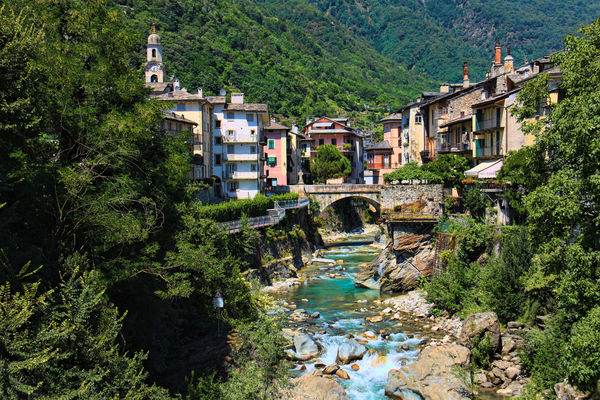
(Download)

(Download)
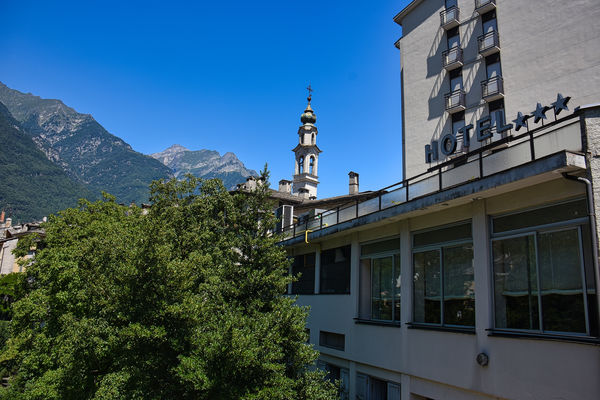
(Download)

(Download)
Terraced farming
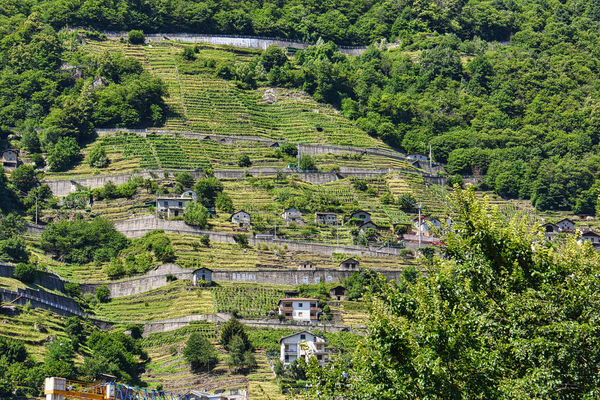
(Download)

(Download)
On the road again - Taken through the tour bus window
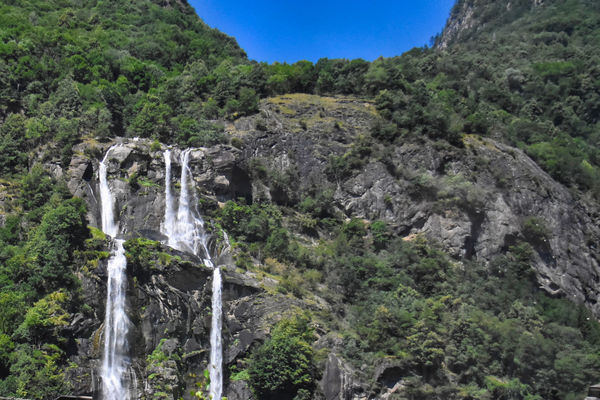
(Download)
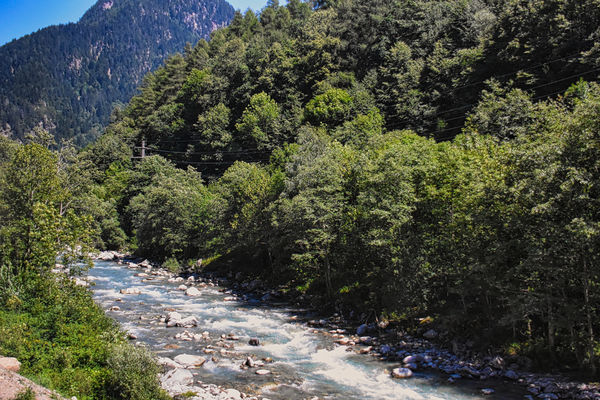
(Download)
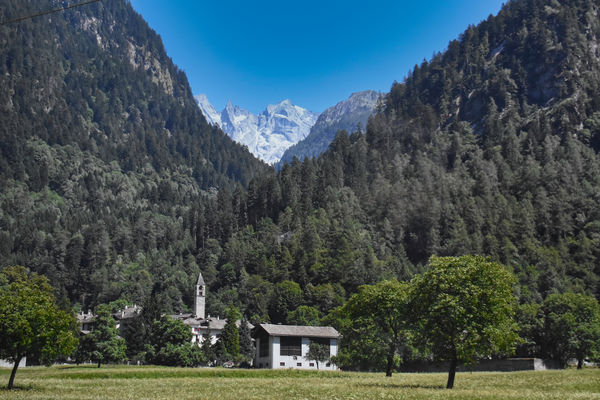
(Download)

(Download)
Jul 7, 2021 15:40:40 #
Jul 7, 2021 15:47:59 #
mundy-F2
Loc: Chicago suburban area
srfmhg wrote:
We stopped in this small town before crossing the ... (show quote)
Nice history and pictures!
Thanks for sharing.
Mundy
Jul 7, 2021 16:05:50 #
srfmhg wrote:
We stopped in this small town before crossing the ... (show quote)
What a gloriously beautiful place to visit or live ❤️❤️🏆❤️❤️
Jul 7, 2021 16:54:50 #
kpmac wrote:
More lovely images of lovely places, Mark. Keep them coming.
Thanks so much Ken. I certainly will keep posting!
Jul 7, 2021 16:55:56 #
mundy-F2 wrote:
Nice history and pictures!
Thanks for sharing.
Mundy
Thanks for sharing.
Mundy
You're most welcome Mundy. Thanks for commenting and taking the time to read the narrative.
Jul 7, 2021 16:56:41 #
joecichjr wrote:
What a gloriously beautiful place to visit or live ❤️❤️🏆❤️❤️
Thanks so much Joe. I wholeheartedly agree!
Jul 7, 2021 17:30:28 #
Jul 7, 2021 17:49:10 #
Jul 7, 2021 18:11:20 #
UTMike wrote:
Beautiful place that you recorded well, Mark!
Thanks very much Mike, I appreciate that!
Jul 7, 2021 18:11:44 #
Jul 7, 2021 18:55:34 #
mundy-F2
Loc: Chicago suburban area
srfmhg wrote:
You're most welcome Mundy. Thanks for commenting and taking the time to read the narrative.
I am making a list of some places to visit. I still like that midevil village!
Thanks.
Mundy
Jul 7, 2021 19:00:20 #
mundy-F2 wrote:
I am making a list of some places to visit. I still like that midevil village!
Thanks.
Mundy
Thanks.
Mundy
If you click on my name and go to "topics created", you can see all of my switzerland posts.
Jul 7, 2021 19:12:00 #
mundy-F2
Loc: Chicago suburban area
srfmhg wrote:
If you click on my name and go to "topics created", you can see all of my switzerland posts.
Thank you and keep the narrative and pictures coming.
Thank you for sharing.
Mundy
Jul 7, 2021 19:14:19 #
mundy-F2 wrote:
Thank you and keep the narrative and pictures coming.
Thank you for sharing.
Mundy
Thank you for sharing.
Mundy
You can count on it!!
If you want to reply, then register here. Registration is free and your account is created instantly, so you can post right away.




